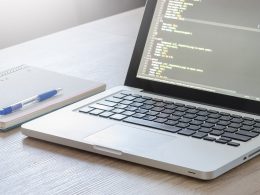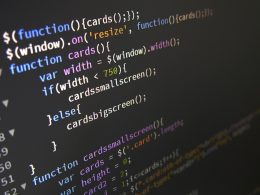In this article, we’ll go through the basics of Python programming. We’ll cover the basics of the language, including data types, variables, loops, and functions. We’ll also provide code examples to help you get started.
Getting Started with Python Programming
Before you start coding in Python, you need to install Python on your computer. You can download Python from the official Python website. After installation, you can start writing Python code right away.
Data Types in Python
In Python, there are several data types that you can use. These include integers, floats, strings, booleans, and lists.
Integers
Integers are whole numbers. They can be positive, negative, or zero. Here’s an example of an integer variable in Python:
num = 42
Floats
Floats are decimal numbers. They can be positive, negative, or zero. Here’s an example of a float variable in Python:
pi = 3.14
Strings
Strings are a sequence of characters. They can be enclosed in single quotes or double quotes. Here’s an example of a string variable in Python:
name = “John”
Booleans
Booleans are either true or false. Here’s an example of a boolean variable in Python:
is_male = True
Lists
Lists are a collection of items. They can be of any data type, including other lists. Here’s an example of a list variable in Python:
fruits = [“apple”, “banana”, “orange”]
Variables in Python
In Python, you can create variables to store data. Variables can be of any data type, including integers, floats, strings, booleans, and lists.
To create a variable in Python, you need to give it a name and a value. Here’s an example of creating a variable in Python:
age = 25
Loops in Python
Loops are used to repeat a piece of code several times. In Python, there are two types of loops: the for loop and the while loop.
For Loop
The for loop is used to iterate over a sequence of items. Here’s an example of a for loop in Python:
fruits = [“apple”, “banana”, “orange”]
for fruit in fruits:
print(fruit)
This code will print out each fruit in the list.
While Loop
The while loop is used to repeat a piece of code until a condition is met. Here’s an example of a while loop in Python:
i = 0
while i < 5:
print(i)
i += 1
This code will print out the numbers 0 to 4.
Functions in Python
Functions are blocks of code that perform a specific task. Functions can take in parameters and return values. Here’s an example of a function in Python:
def add_numbers(num1, num2):
return num1 + num2
result = add_numbers(5, 10)
print(result)
This code will add the numbers 5 and 10 together and print out the result, which is 15.
Conclusion
Python is a popular programming language that’s easy to learn and easy to use. It’s a versatile language that can be used for anything from developing web applications to building machine learning models. In this article, we covered the basics of Python programming, including data types, variables, loops, and functions. With these basics, you can start writing Python code and explore its many possibilities.
[ad_2]









